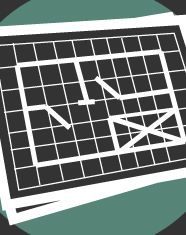 Learn the Basic language and research-based best practices associated with Planning in general and planning rigorous units of study in particular.
Learn the Basic language and research-based best practices associated with Planning in general and planning rigorous units of study in particular.Layer 1 — EXPLORE planning specific language and IDENTIFY research-based, best practices associated with planning rigorous units of study
- ENGAGE prior knowledge to INTEGRATE specific planning-based vocabulary.
- CONDUCT standardized, guided PRACTICE in the development of planning workflows.
- DEMONSTRATE the use of specific planning-based practice and vocabulary.
- Example: USE specific identified planning-based vocabulary and strategies to design rigorous units of study.
Planning Basics
- Resource
Building a Strong Curricular Foundation.pdf
Before constructing the curricular units of study, it is necessary to first build a strong foundation. Otherwise, curriculum design teams are erecting a superstructure upon an uncertain base. Here is a brief description of each of the five foundational steps. - Resource
Design the Curricular Units, From Start to Finish .pdf
With the standards foundation in place, design each curricular unit, from start to finish. Here is a synopsis of each of the twelve sequential steps for doing so. Be sure to include all of these elements (except the weekly and daily planners) on the agreed-upon unit planning organizer. - Resource
Implement Each Unit of Study.pdf
When the unit planning organizers are completed and ready to use, implement each of the units according to the scheduled pacing calendars. Here is a brief description of the fourteen steps for doing so. - Resource
Implementing Rigorous Curriculum Design in the Seven Steps Forward.pdf
Larry Ainsworth's Rigorous Curriculum Design curriculum development process and ALCA's Seven Steps Forward content, services, and professional association focus are highly compatible. Combined they provide different layers essential for systemic implementation. - Resource
L1.1 Planning — Describe What and How a Room can be Used
No Description Available - Resource
L1.3 Planning — Describe how Web Presence can Communication
Describe the benefits and the options available to support communication with peers, learners, parents, and the local and broader community at large. Be able to include in the description how the following can be used to support collaborative communication:- Calendars
- Online Discussions
- Access to Resources
- Web publishing
- Forms
- Location Resources
- Resource
LADDER — Integrating Rigorous Curriculum Design and Seven Steps Forward.pdf
Larry Ainsworth's Rigorous Curriculum Design curriculum development process and ALCA's Seven Steps Forward content, services, and professional association focus are highly compatible. Combined they provide different layers essential for systemic implementation. - Resource
Learning Progression of Tasks
This document reflects a flowchart that represents research-based frameworks (i.e., Marzano, Wiggins/McTighe, Daggett) and implementing standards mapping based on Larry Ainsworth's work. It provides an indepth visual of elements (i.e., assessments, Blooms, frameworks, unwrapped standards) that must be considered with developing one's lesson plans - Resource
Learning Progression of Tasks.pdf
- Resource
Plan-Do-Study-Act Applied to Rigorous Curriculum Design.pdf
The delivery of a unit emphasizes the collaboration of PLT's addressing common pre-, post-, and formative assessments, assessment and curriculum alignment data, planning differentiated instruction, and multi-disciplinary problem/project-based learning.
Potentially an educator can belong to one or more PLTs that are site, district, or multi-district-based. Multi-district PLTs can focus on shared curriculum and assessment development and implementation. Thematic PLT's can involve students conducting units allowing them to analyze or evaluate student-generated data or products (e.g., water quality data, non-fiction writing focused on local communities, creation of locally-focused virtual museums, online academic competitions using wrapped common core items). - Resource
Rigorous Curriculum Design Alignment Diagram .pdf
- Resource
Rigor / Relevance Framework.pdf
The Rigor/Relevance Framework is a tool developed by staff of the International Center for Leadership in Education to examine curriculum, instruction, and assessment. The Rigor/Relevance Framework is based on two dimensions of higher standards and student achievement. - Resource
Shewhart Continuous Improvement Cycle.pdf
This PDSA Cycle graphic illustrates one perspective of how Larry Ainsworth's Rigorous Curriculum Design (RCD) model addresses Plan - Do - Study - Act. Although there are two PDSA Cycles in conducting a RCD unit, there is continuous data-driven reflection on actual student learning. In essence, each learning task has its own PDSA cycle feeding (assuming formative assessments are done) into the larger cycles. - Resource
SMART Goals Resources
This folder contains resources used in the Standards Professional Development. - Resource
Unit Pacing Calendar Worksheet.pdf
About Planning
Planning Training
Planning Topics
Planning Resources
Planning Feedback
Planning QuickStarts

Arch Platform is Copyright © 1997-2013
GammaStream Technologies, Inc. & Aurora Learning Community Association
0.3044 and 9.81MB | v2014.03.15
GammaStream Technologies, Inc. & Aurora Learning Community Association
0.3044 and 9.81MB | v2014.03.15